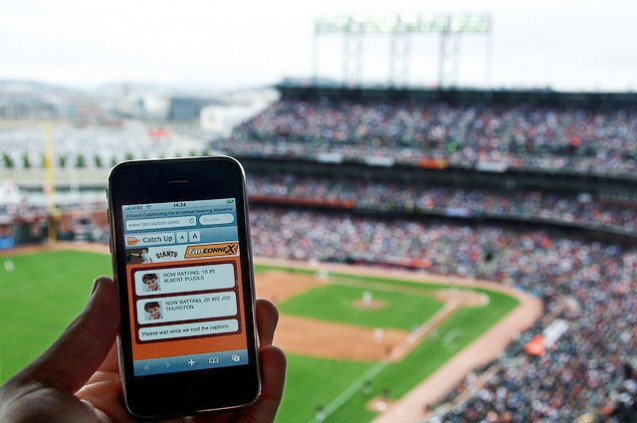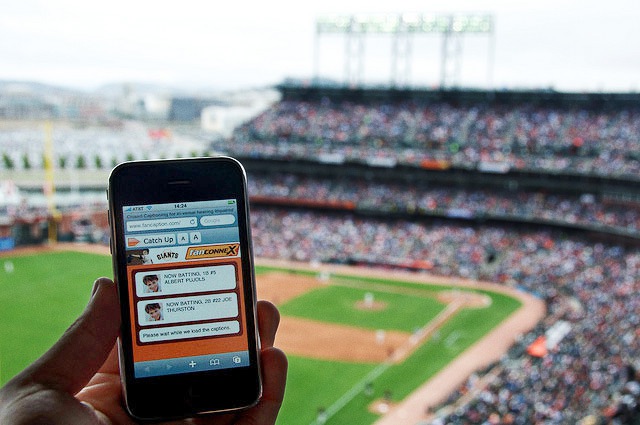The score is tied. Both teams are traveling up and down the court almost as fast as a tennis match. You scored one of the best center court seats in the house to watch your favorite college basketball team. Of course you would tweet a blow by blow account, just to be sure that all of your friends know what they are missing. But what if you were a reporter officially covering the game? If you are court side at the University of Washington, you will need to keep track of just how much you’re tweeting out or you run the risk of getting your credentials revoked.
Tacoma News Tribune reporter, Todd Dybas, found this out the hard way over the weekend. UW reprimanded the reporter for violating their live coverage policy by posting too many game updates on Twitter during Sunday’s game with Loyola.
The Live Coverage Policy states:
Credential Holders (including television, Internet, new media, and print publications) are not permitted to promote or produce in any form a “real-time” description of the event. Real-time is defined by the NCAA as a continuous play-by-play account or live, extended live/real-time statistics, or detailed description of an event. Live-video/digital images or live audio are not permitted. Each of the aforementioned descriptions is exclusive to the official athletic website of the host institution (GoHuskies.com), the official athletic website of the visiting institution, and any designee of the UW department of athletics. Periodic updates of scores, statistics or other brief descriptions of the competition throughout the event are acceptable, as long as they do not exceed the recommended frequency (20 total in-game updates for basketball, 45 total in-game updates for football). Credential Holder agrees that the determination of whether an outlet is posting a real-time description shall be in UW’s sole discretion. If UW deems that a Credential Holder is producing a real-time description of the contest, UW reserves all actions against Credential Holder, including but not limited to the revocation of the credential.
UW and its designated personnel shall be the final authority on whether a Credential Holder or Credential Entity is following the Live Coverage Policy.
The University of Washington is not the only institution with such a policy. GeekWire reports that USC has had a similar policy for the last three seasons.
Should live social media updates be governed by the same rules as protected broadcasting rights when it comes to coverage of college sports? According to Mashable, “That’s precisely why Washington’s policy was put into effect, the school says. During games, the athletic department hosts live chats on its official GoHuskies.com site, and it doesn’t want super-detailed live tweeting to become overly competitive with that product. In the bigger picture, though, the policy is meant to provide insurance in the coming years, as the capability for anyone to provide live updates from anywhere — possibly including snippets of live video — evolves.”
There is certainly a valid reason to drive as much traffic as possible to the domains and media outlets officially covering sporting events. But keeping a lid on tweet coverage may not be the way to go. These universities, like many other businesses, are looking at their audience as a finite pie that gets sliced up among various media outlets. Second screen coverage, like live tweets, doesn’t segment the pie into smaller and smaller slices, it actually increases the overall size of the audience pie. Live tweets reach fans that can’t get the game on radio. Social media can bring fans together and keep them talking longer in ways that a regional television broadcast can’t.
Let me give you a personal example. I grew up in Oklahoma and I’m a die hard Sooners fan. I now live in Florida. As much as I love my friends and neighbors, I will never care about the Gators nearly as much as I love my Sooners. But, guess what, I can see far more Florida games on TV than I can Oklahoma. Why? Because I no longer live in the broadcast region for my team. So, how do I keep Crimson and Cream flowing in my blood? My Boomer family and friends, and the local reporters I can follow online are my life-line to OU sports.
Instead of limiting live tweets, wouldn’t it be better for the universities to get involved and engage their far flung fans? The social buzz certainly couldn’t hurt ticket and merchandise sales, or the generosity of athletic supporters.
Image Credit: Flikr/tom.arthur





